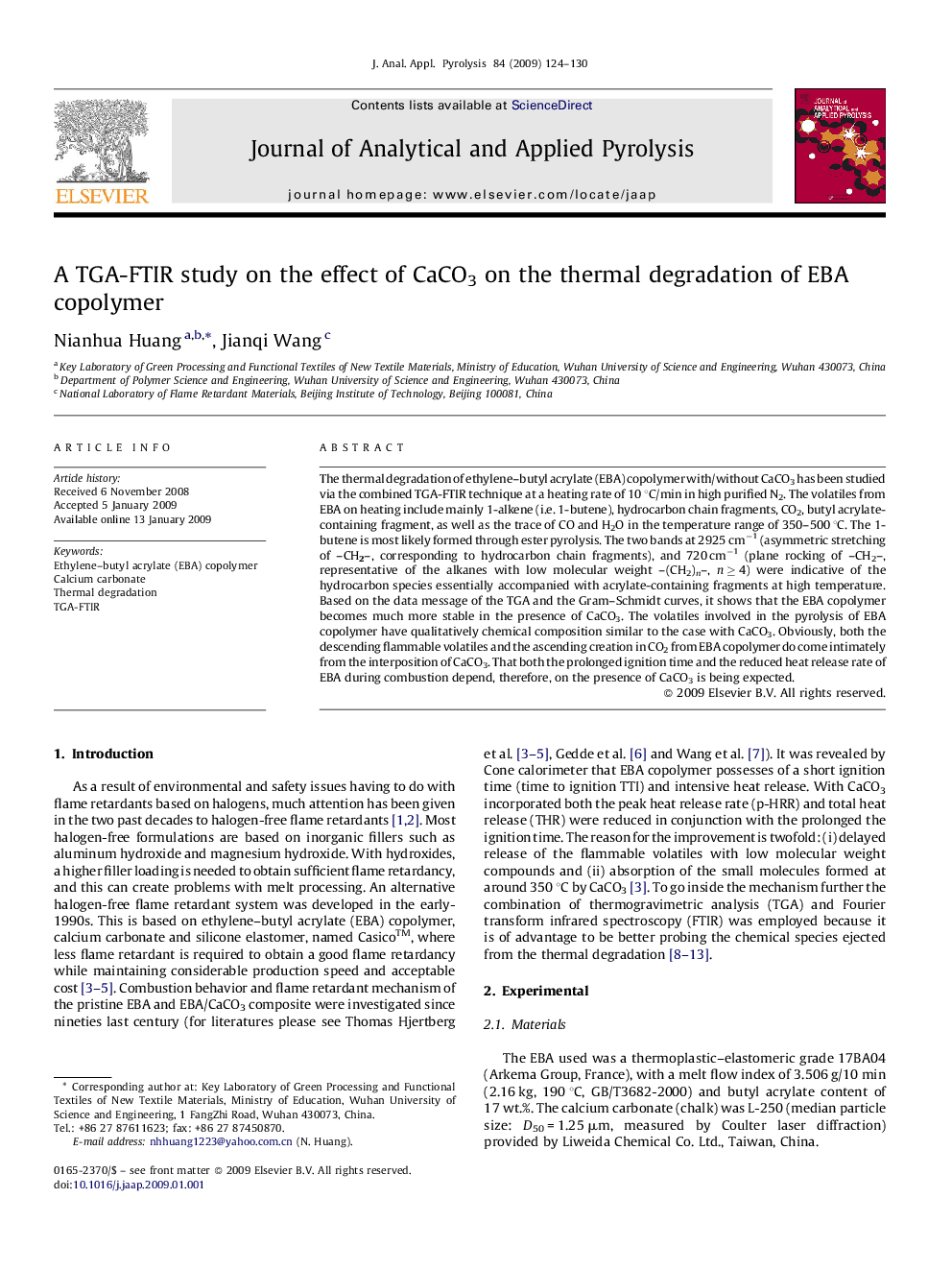| کد مقاله | کد نشریه | سال انتشار | مقاله انگلیسی | نسخه تمام متن |
|---|---|---|---|---|
| 1197034 | 964632 | 2009 | 7 صفحه PDF | دانلود رایگان |

The thermal degradation of ethylene–butyl acrylate (EBA) copolymer with/without CaCO3 has been studied via the combined TGA-FTIR technique at a heating rate of 10 °C/min in high purified N2. The volatiles from EBA on heating include mainly 1-alkene (i.e. 1-butene), hydrocarbon chain fragments, CO2, butyl acrylate-containing fragment, as well as the trace of CO and H2O in the temperature range of 350–500 °C. The 1-butene is most likely formed through ester pyrolysis. The two bands at 2925 cm−1 (asymmetric stretching of –CH2–, corresponding to hydrocarbon chain fragments), and 720 cm−1 (plane rocking of –CH2–, representative of the alkanes with low molecular weight –(CH2)n–, n ≥ 4) were indicative of the hydrocarbon species essentially accompanied with acrylate-containing fragments at high temperature. Based on the data message of the TGA and the Gram–Schmidt curves, it shows that the EBA copolymer becomes much more stable in the presence of CaCO3. The volatiles involved in the pyrolysis of EBA copolymer have qualitatively chemical composition similar to the case with CaCO3. Obviously, both the descending flammable volatiles and the ascending creation in CO2 from EBA copolymer do come intimately from the interposition of CaCO3. That both the prolonged ignition time and the reduced heat release rate of EBA during combustion depend, therefore, on the presence of CaCO3 is being expected.
Journal: Journal of Analytical and Applied Pyrolysis - Volume 84, Issue 2, March 2009, Pages 124–130